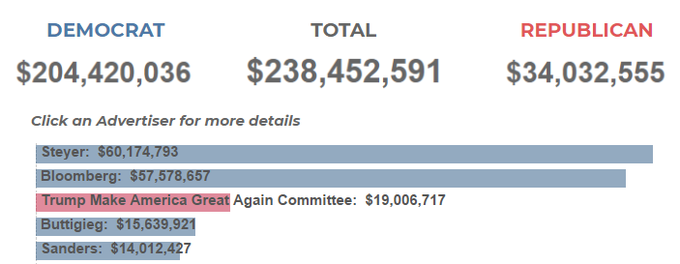 Michael Bloomberg has filed to be a presidential candidate, but does that mean he wants to be in the Oval Office?
Michael Bloomberg has filed to be a presidential candidate, but does that mean he wants to be in the Oval Office?
CNBC is reporting that Bloomberg has purchased a whopping $57 million on TV ads, outspending almost every other Democratic candidate on TV and digital ads since he entered the race just over a week ago (billionaire Tom Steyer, has spent a little over $60 million since July).
Advertising Analytics, a data company who tracks spending, reports Bloomberg has paid over $6 million on national TV spots, plus $3 million in local ads focused on the New York and Los Angeles markets, and over $4 million on commercials airing in Texas.
That being said, Bloomberg is not participating in the Iowa caucuses and is not on the ballot in some of the other early states (New Hampshire, South Carolina and Nevada).
So what gives?
There has been speculation that Bloomberg is not interested in being president, but wants to ensure Trump is a one-term president and is running ads that are critical of his term in office. So why file and be a candidate?
Three words…Lowest Unit Rate.
By law, federal candidates are entitled to the lowest rates in the “class” of time they purchase (this only applies in political protection periods) thanks to Communications Act of 1934. The math can get a little complicated, but the bottom line is that candidates running for federal office are entitled to buy advertising at lower rates. By filing as a candidate, Bloomberg has access to purchase advertising at these rates which extends his buying power.
This also puts pressure on the Republican Party to keep up with the spending taking place. Advertising Analytics tweeted this graph Dec. 2, 2019 showing a wide disparity in spending.
There is still a long way to go, but it will be interesting to see how much of a candidate Bloomberg will be.

